Colombia’s Lost City Trek is the perfect mix of nature, culture, and adrenaline. This 3-5 day trek through the jungles of the Sierra Nevada ends with a visit to one of the oldest indigenous sites in the world – plus an opportunity to learn about the current indigenous people that occupy the region.
If this sounds like something up your alley, strap on your hiking boots and get ready for an adventure, because trekking to the Lost City is one of the best things you can do in the country. Whether you’re spending some time along the Colombian coast or traveling specifically for a jungle adventure, this is a can’t-miss experience to have in Colombia.
In this article, I’ll share my experience on our 4-day trek to the Lost City with Magic Tour Colombia, as well as everything I learned along the way – from what to pack to trail conditions to whether the trek is worth it!
So let’s get hiking shall we?
This site uses affiliate links to share products that I use and love! If you click on one of the links I may receive a small commission at no additional cost to you. This helps keep my site up and running — thank you!
Lost City Trek Video
Want to learn more about my experience along the Lost City Trail? Check out this video I made all about the trek and the department of Magdalena!
Book Your Lost City Trek
I booked my Lost City Trek directly through Magic Tour Colombia. Their guides were incredibly knowledgeable and the accommodations along the way were comfortable and well taken care of. I highly recommend booking with Magic Tour if you are looking for a reliable tour operator to the Lost City.
Alternatively, prices are relatively comparable through Get Your Guide and Viator. You can check out the most up-to-date prices on their websites.
Looking to spend more time in Colombia? Check out my full 3-week itinerary!
What is the Lost City?
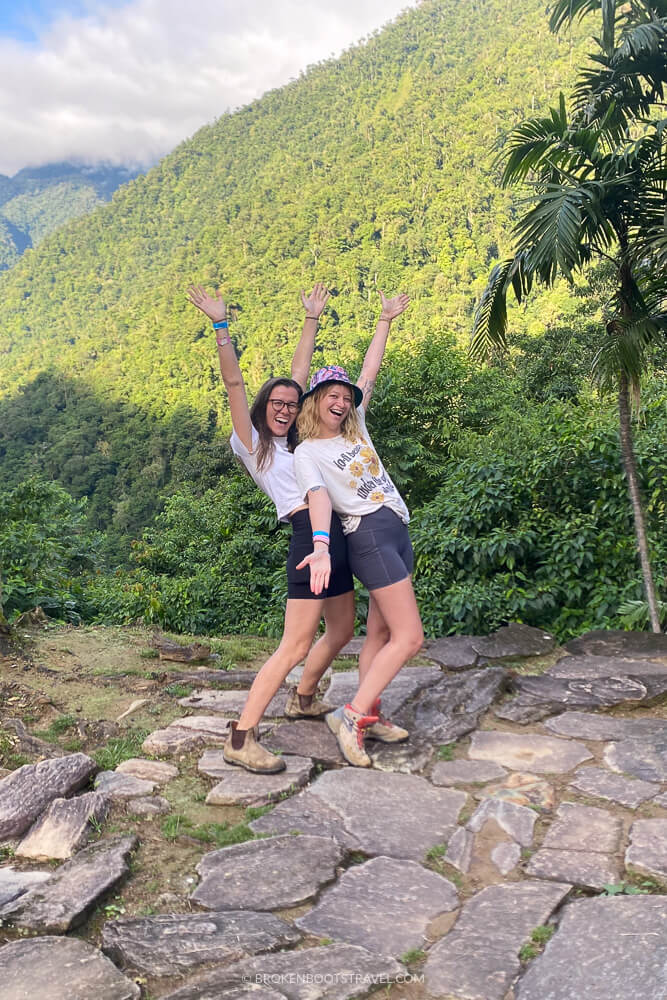
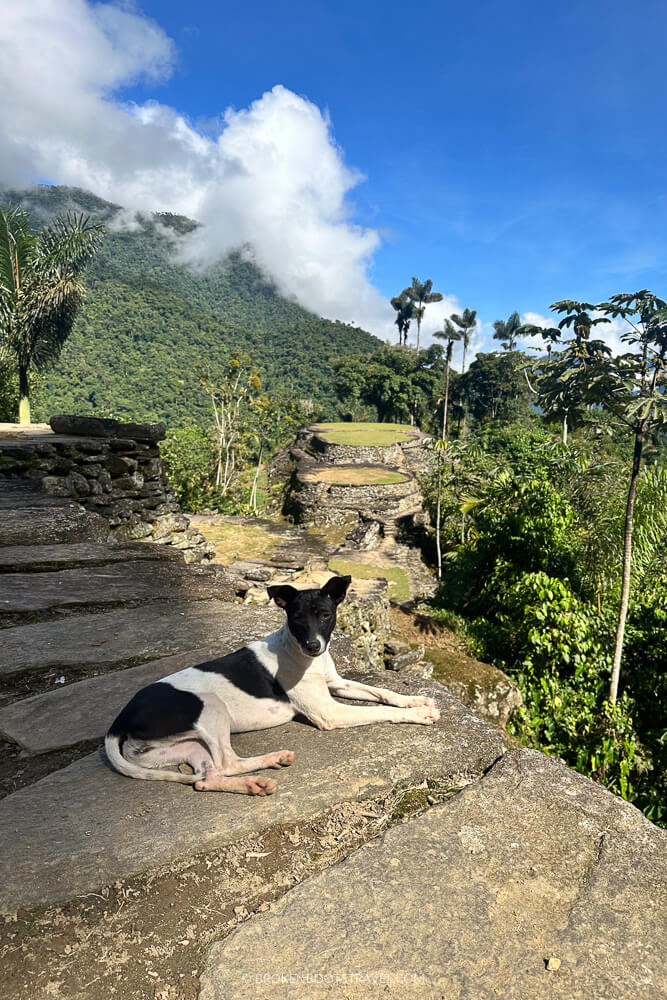
The Lost City Trek is a hiking route in Colombia’s Sierra Nevada National Park, leading visitors to the “lost city” of the Pre-Columbian Tayrona people. The city itself is known as Teyuna and is estimated to have been built around 800 AD, nearly 700 years before Machu Picchu.
But why is it referred to as the “Lost City?” Following Spanish colonization in the 1600s, the Tayrona people were forced to flee from the city for safety. Because of its position deep in the jungle of the Sierra Nevada, the city was lost to outsiders for centuries, not rediscovered until it was stumbled upon by grave robbers in the 1970s. However, it’s important to note that the indigenous people of this region always knew about the city’s existence – but kept it a secret in order to protect it.
In the years following the rediscovery of Teyuna, it became a center point of violence, and families fought over the gold found at the site. This did however eventually alert archeologists to its existence, and since the 1980s, restoration efforts have been in place to maintain the site.
Since 2005, tours have operated to the Lost City, bringing visitors through the jungle to the ancient city of Teyuna. Tour operators are required to work closely in collaboration with the indigenous people of the area to ensure that the site is maintained and shared in a respectful manner, and the site remains a sacred site to this day.
Want to learn more about the Tayrona people? Consider a day trip to Tayrona National Park, another sacred Tayrona site.
What to Expect from the Lost City Trek
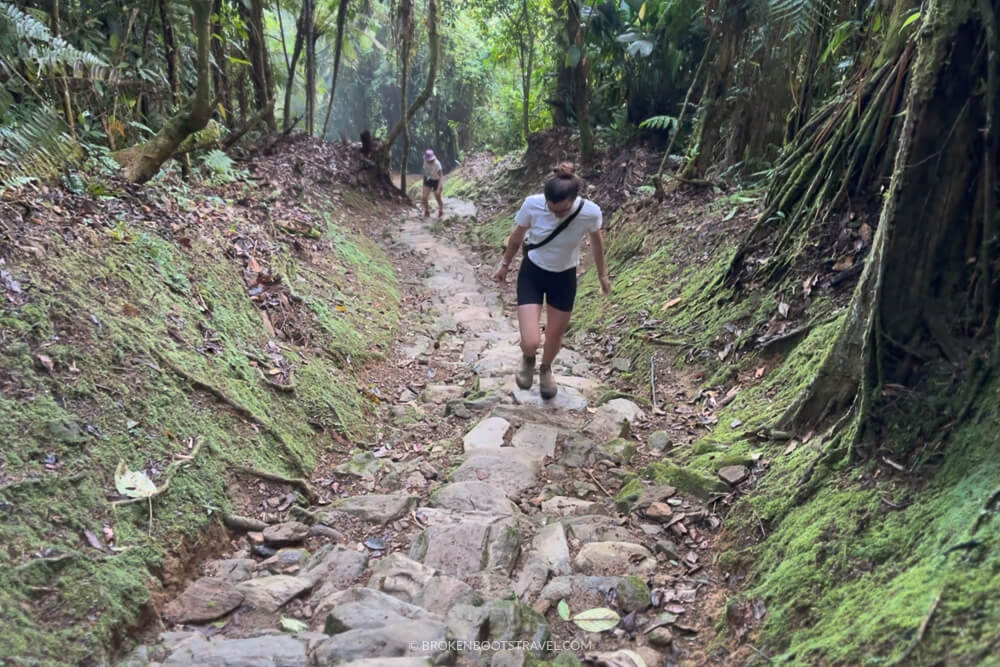
The Lost City Trek begins in the town of Mamey, traveling 44 kilometers through the jungle before arriving at the ruins of the ancient city of Teyuna. In order to reach the city, the final step is to travel up 1,200 stone steps, constructed around 800 AD.
Most tour operators offer 3, 4, and 5 day treks, the main difference being the pace at which you hike the trail. We opted for the 4-day trek and found it to be a good middle ground, but if you’re a super hiker or short on time, you might want to consider the 3-day trek. Alternatively, if you want to take your time and enjoy the trail, the 5-day trek might be more your speed.
The trail varies in difficulty, but there are accommodations along the way such as mules and motorcycle taxis that can help transport hikers through certain parts of the trails. Note that these accommodations have additional charges, so it’s important to have extra cash on hand during your trek.
Interested in cultural traditions in Colombia? Check out this in-depth guide to Christmas around the country!
Difficulty of the Trek
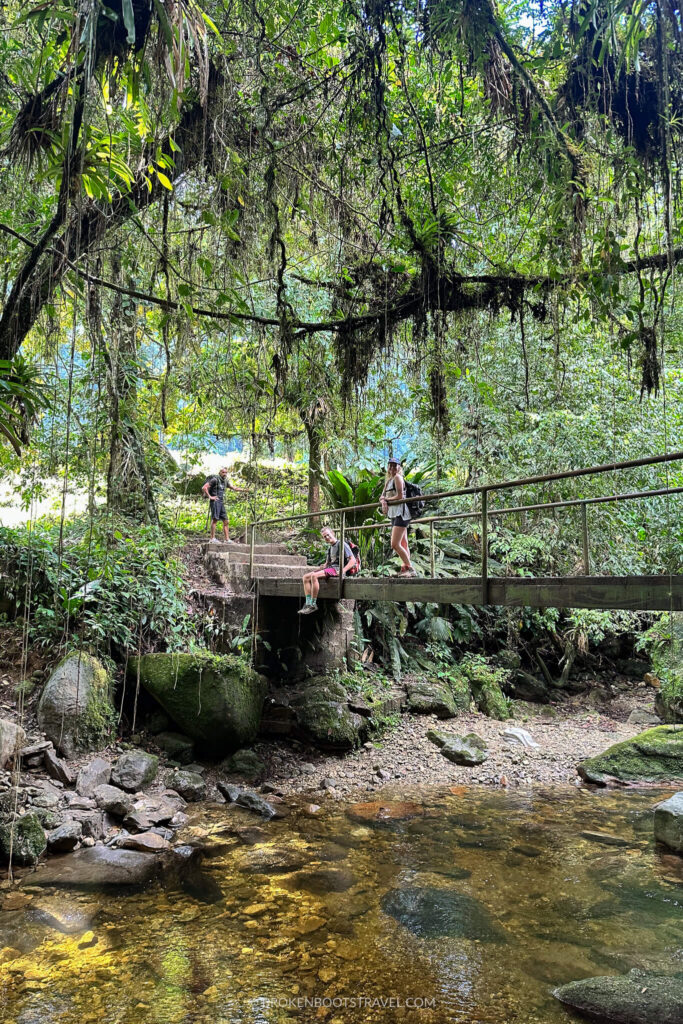
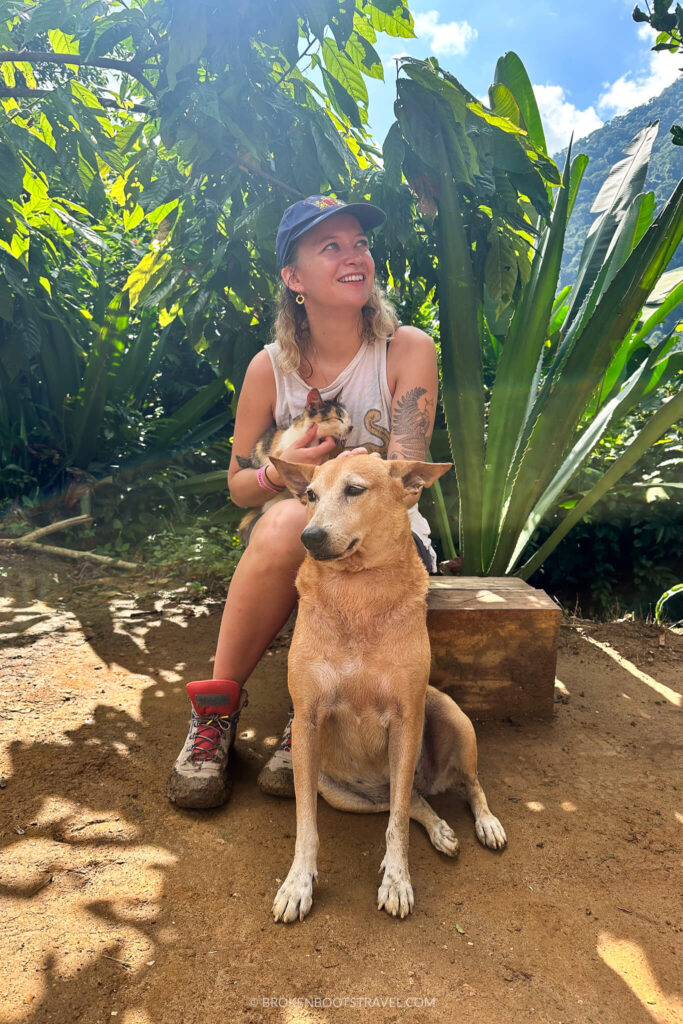
The Lost City Trek is not necessarily difficult in a technical sense, but the length and conditions can make the trail a fun challenge even for a master hiker. That being said, there are hikers of all ages and experience who are able to complete the trek, and there are many accommodations along the trail for hikers of all abilities.
I would say on average for the 4-day trek, we hiked around 5-7 hours per day. This included plenty of breaks for water, snacks, and lunch along the trail, and we often had time to enjoy the campsites in the evenings and swim in the river.
The trail is mostly dirt and changes in elevation, meaning you’ll encounter steep sections and downhill sections. However, since most tour operators offer mules to carry the majority of your belongings, you won’t have to trek with much weight on your back, making the hike easier.
Lodging and Accommodation
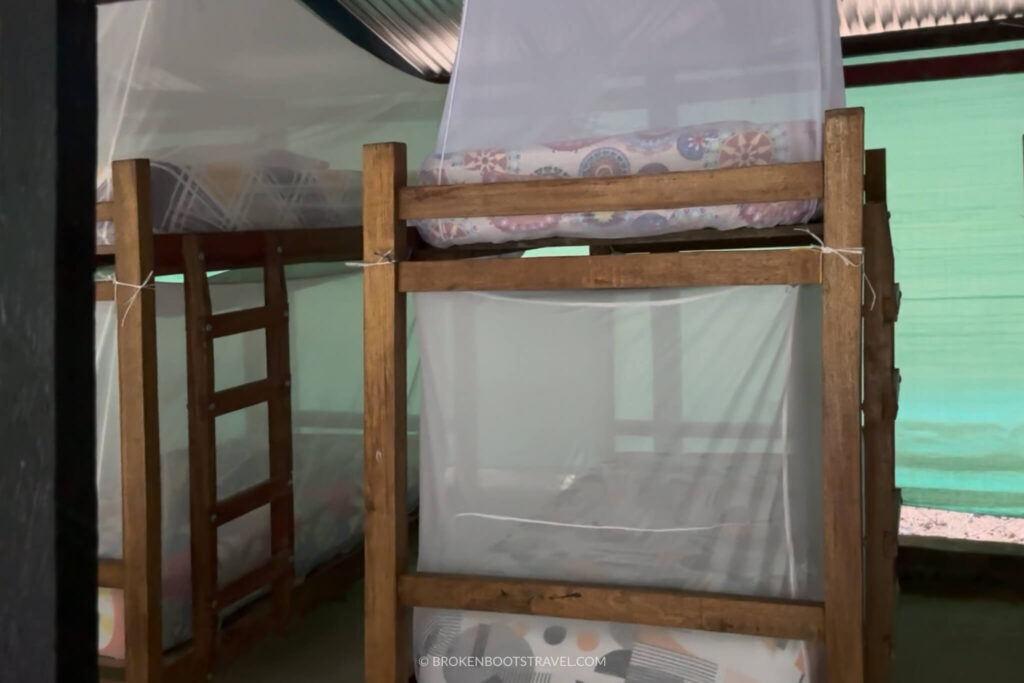
The lodging along the trail is basic, but still quite comfortable after a day in the jungle. I expected nothing more than a hammock and was pleasantly surprised to find bunk beds complete with mattresses and mosquito nets!
That being said, don’t come expecting luxury accommodation. While the beds are comfortable, there’s still not much privacy in your bunk. Showers are also cold, so remember to bring a warm towel or sweatshirt to wear around camp after you bathe!
Finally, while the water at sites is filtered, there were unfortunately a few people in our group who experienced gastrointestinal problems (myself included!) Next time, I’d bring a filtered water bottle, like this one from Water-To-Go, just as an extra layer of protection.
Weather Conditions
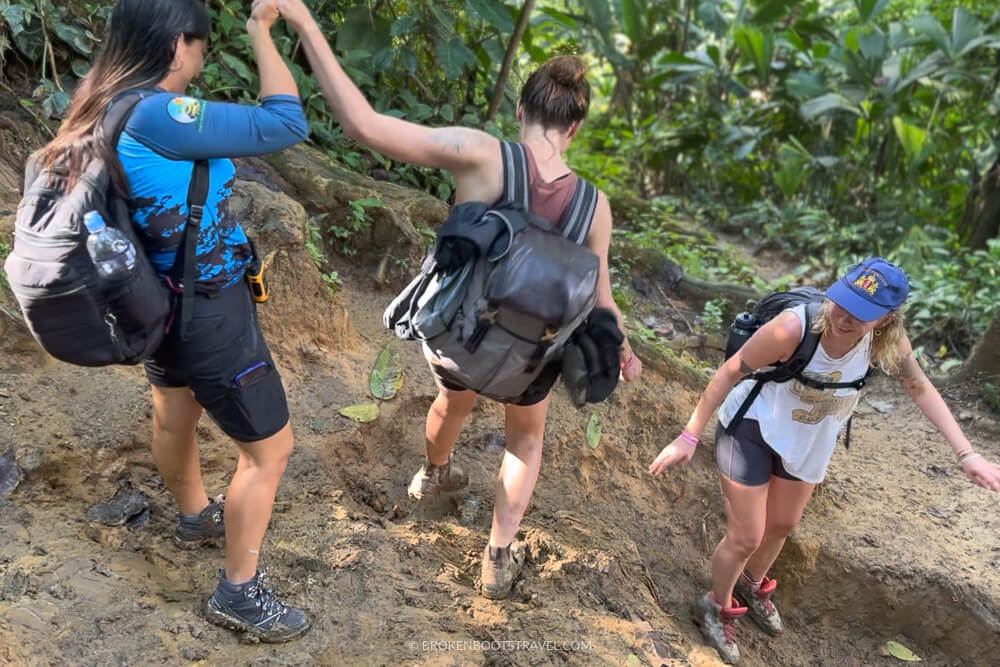
Weather along the trail can vary depending on the time of year. December-March are known as the dryer months in Colombia, so the trail will be less muddy, but you’ll also likely encounter more mosquitoes.
Alternatively, May-October are the rainiest months in the country, so you’ll find muddier sections along the trail and potentially be prepared to hike in the rain. Admittedly, even during the dryer months, you’ll likely encounter some muddy spots along the trail due to runoff from the snowy peaks of the Sierra Nevada.
No matter what time you chose to hike, proper DEET mosquito repellent and a quality rain jacket are essential on the Lost City hike.
Sites Along the Trail
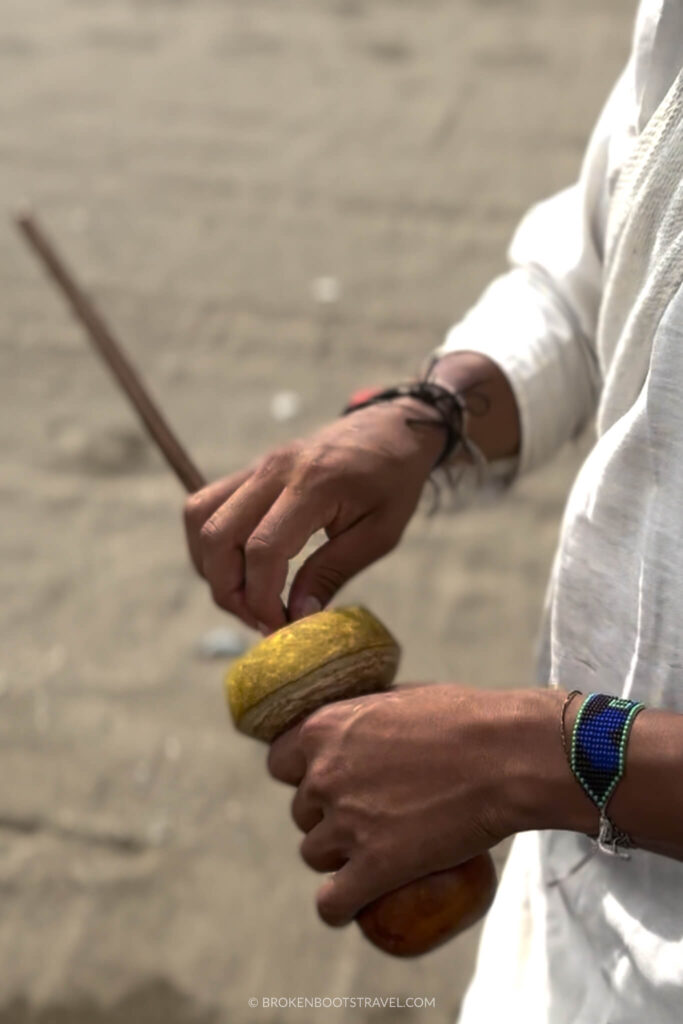
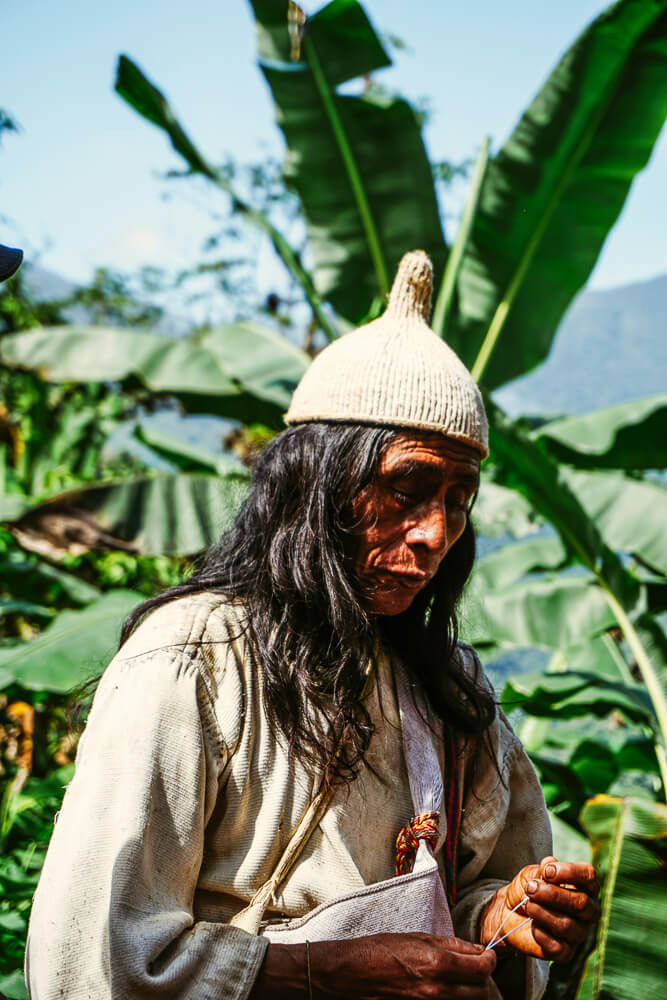
As cheesy as it sounds, hiking the Lost City Trek is much more about the journey than the destination. While the ruins of Teyuna are certainly a beautiful site to see, part of the appeal of the trek is the ability to observe the beautiful landscapes, learn the history of the region, and interact with the indigenous people in the area.
During the trek, you will pass through an Indigenous Reservation, home to 4 groups who are descended from the Tayrona people – the Kogi, the Wiwa, the Arhuaco, and the Kakuamo. These groups are primarily concentrated here in the Sierra Nevada and in the neighboring department of La Guajira.
The trail passes through numerous indigenous towns, where you will have the chance to interact with members of these communities. It’s important to approach these interactions with respect – after all, you are in their home. Please always ask for permission before taking photographs and be respectful of cultural norms.
There are numerous rivers along the Lost City Trek, which you will be able to cross by suspended bridges. Many campsites are also located near water sources, perfect for swimming after a long day of trekking. Just be warned – the water comes from the Pico Nevado, so it’s a little chilly!
Did you know? The Colombian Vallenato Festival just crowned it’s first indigenous King of Vallenato in 2021 — José Ricardo Villafañe in 2021. You can learn more about this festival in my extensive guide!
Can You Do the Lost City Trek Independently?
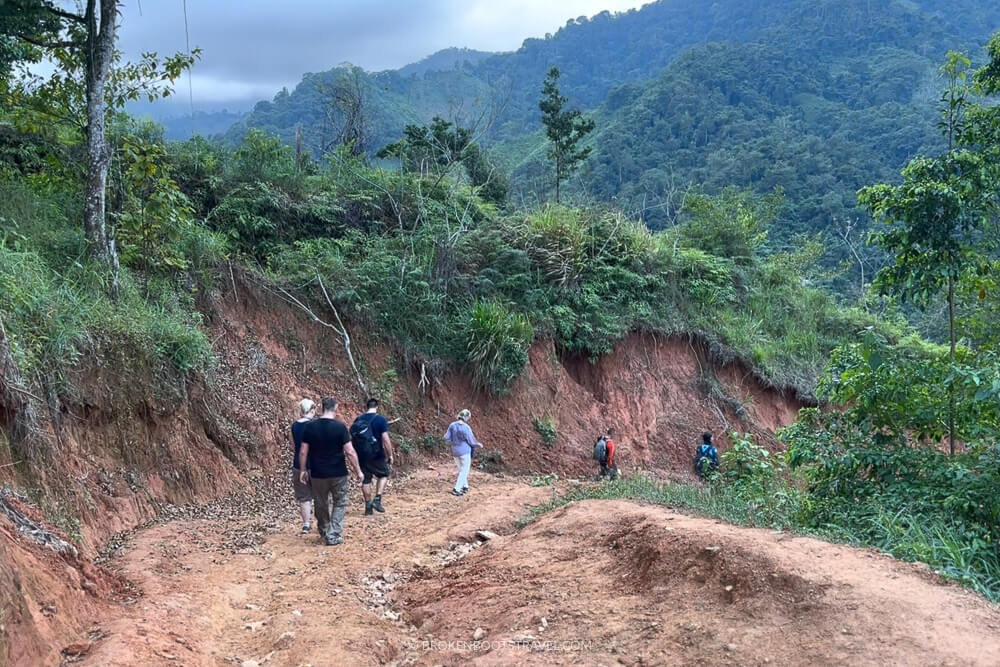
You cannot do the Lost City Trek independently. It’s important to remember that the site is located on sacred indigenous land. As such, guided tours ensure that the site is treated with respect and work with local indigenous communities to protect the site.
The Sierra Nevada mountains surrounding the Lost City have also long been a central site of armed conflict in the country, especially between narco-traficos and guerilla groups. In 2003, a group of tourists were abducted from the site by paramilitary groups, and the trail was not reopened to visitors until 2005 with heightened surveillance. While the violence has decreased significantly in recent years, guides are still required as a layer of protection.
The terrain surrounding the Lost City is also an unforgiving environment, a dense jungle filled with – to the average traveler – a number of unfamiliar plants and animals. While the trail is generally well marked, a few steps off the trail could quickly turn into a survivor situation. With all this in mind, you are required to go with a guide for the safety and security of all involved.
Is it Worth the Money?
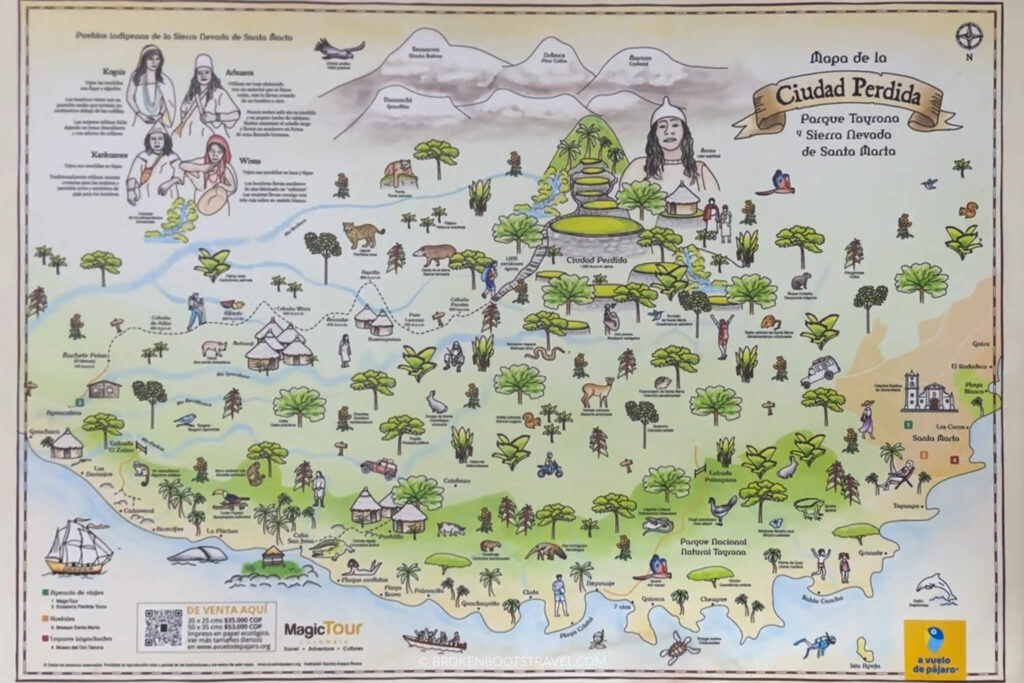
So listen, I know the price of the Lost City Trek can be steep, especially on the average backpacker budget. But I do think the price of the Lost City Trek is worth it – and here’s why.
Tour operators are required to work closely with the indigenous groups in the area, and the prices of Lost City Tours directly support efforts meant to preserve and restore this sacred indigenous site. Trekking to the Lost City, granted that you do it respectfully, is one of the best ways to actively support the indigenous communities in the Sierra Nevada.
Second, tours are all-inclusive. This means you’ll get transportation, accommodation, meals, luggage services, and more all included in the tour price. When you factor in everything you’re getting – plus guide fees, paying those who upkeep the lodges, cook, etc, the price begins to make more sense.
Obviously, trekking to Colombia’s Lost City is still not a budget-activity, but if you have the time and money, I absolutely recommend it. It’s one of the most extraordinary ways to connect with the culture and history of this region, and get some exercise in while you do it!
What to Bring On the Lost City Trek
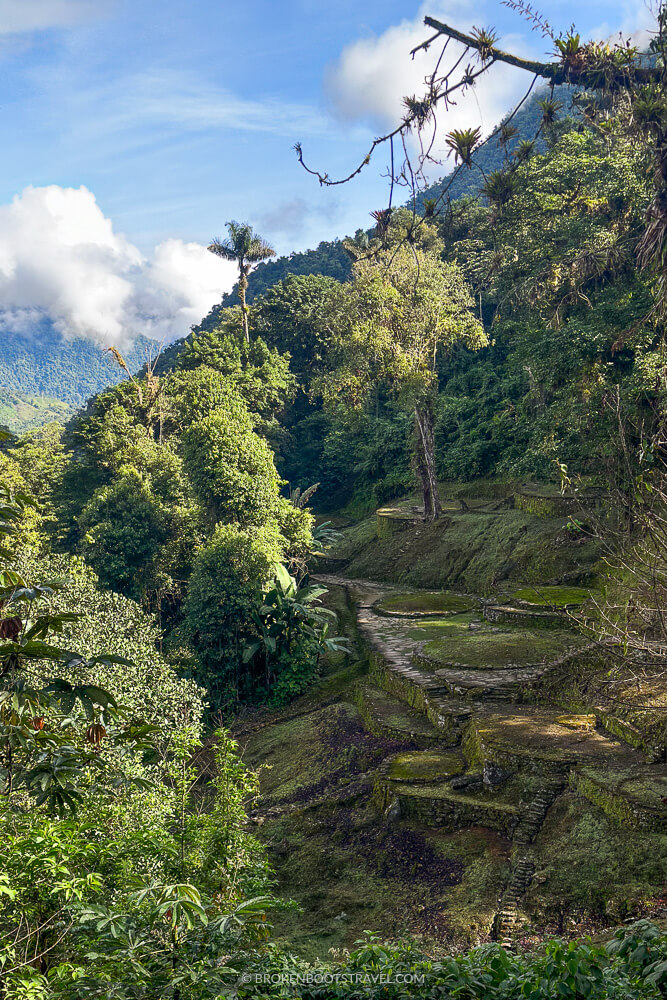
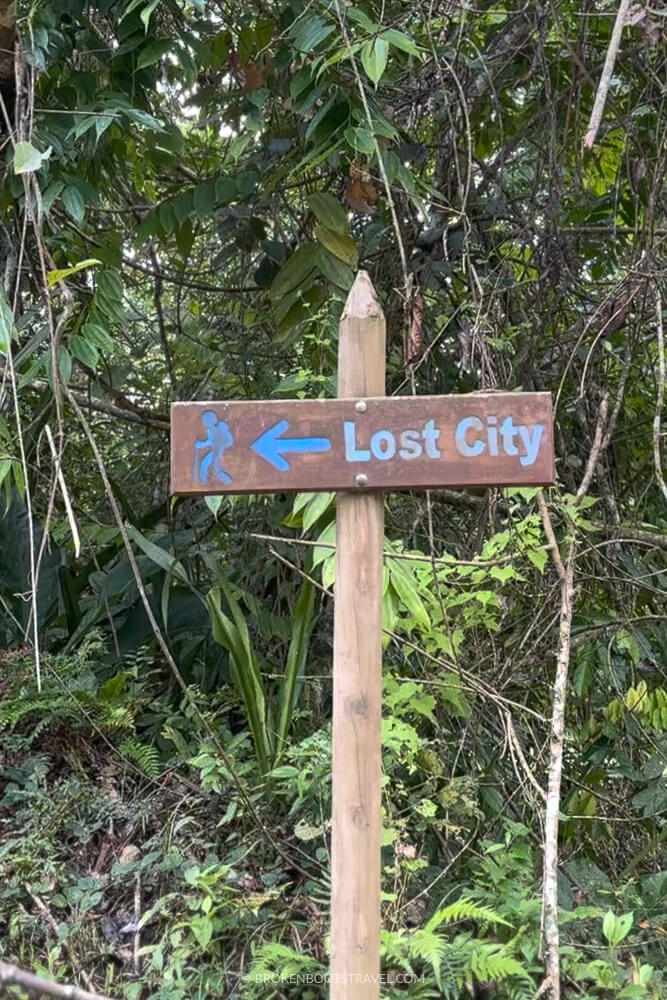
Most tour operators will send you a comprehensive list of items to bring on your trek, but I generally recommend bringing the following for a 3-5 day trek to the Lost City
- CLOTHING | Lightweight, quick-dry materials preferred, long sleeves and long pants for sun coverage and mosquito protection, underwear/bras
- SHOES | Sturdy hiking shoes as well as a pair of flip flops/sandals to wear around camp
- TOILETRIES | Soap, shampoo, toothbrush, toothpaste, hairbrush, floss
- PROTECTION | Hat, sunglasses, sunscreen, bug repellent
- EXTRAS | Bathing suit, lightweight or microfiber towel, playing cards
- CASH | Around 200,000 COP for any extras along the trail such as gatorade, snacks, souvenirs, etc.
Regarding electronics on the trail, you are unlikely to find cellular data anywhere along the trail, even with a local or international plan. However, most campsites have charging stations and wifi for those who want to use their phones.
If you do opt to bring your phone along the trek, remember to bring your charging cable and connecting block. You may also want to bring a portable charger if your phone is your main camera along the trail.
The Best Time to Visit the Lost City
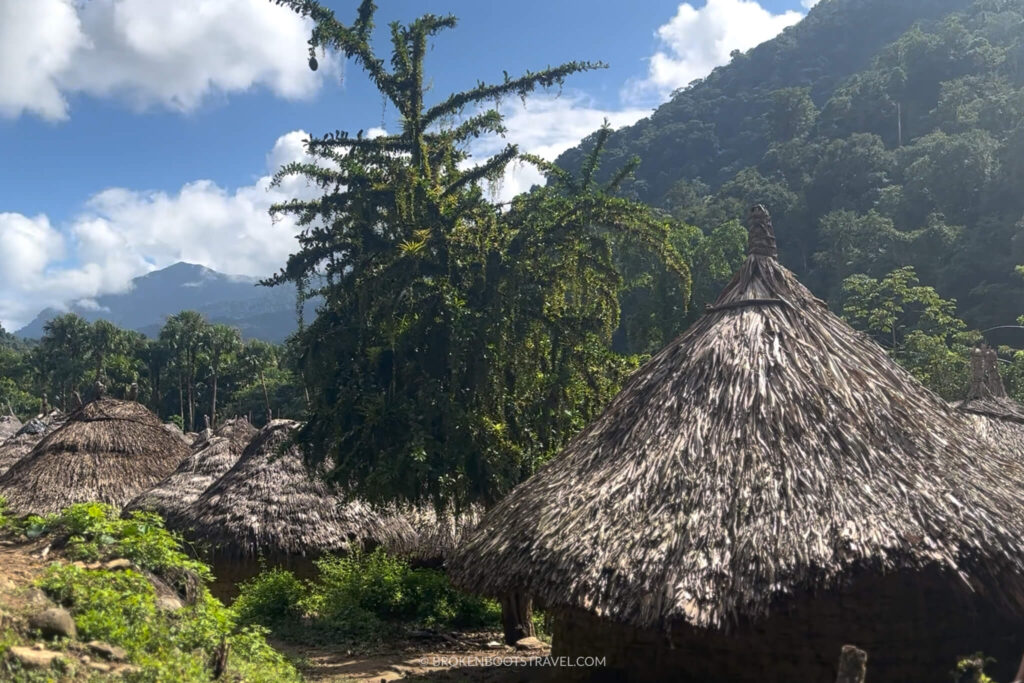
The busiest month to hike the Lost City Trek is January due to vacations. However, there is a limit of 150 visitors on the Lost City Trek every day, so the crowds will never go higher than that.
We actually opted to do the trek over New Year’s Eve, which turned out to be a great choice as there were far less people on the trail. We were heading back down on New Year’s Day, feeling grateful we’d started earlier as we passed big crowds making their way up the mountain!
December to March are usually the driest months in Colombia, whereas May to October see more sporadic rain. However, whenever you decide to trek, it’s important to bring proper rain gear with you in case of a surprise storm.
Where to Stay Before the Lost City Trek
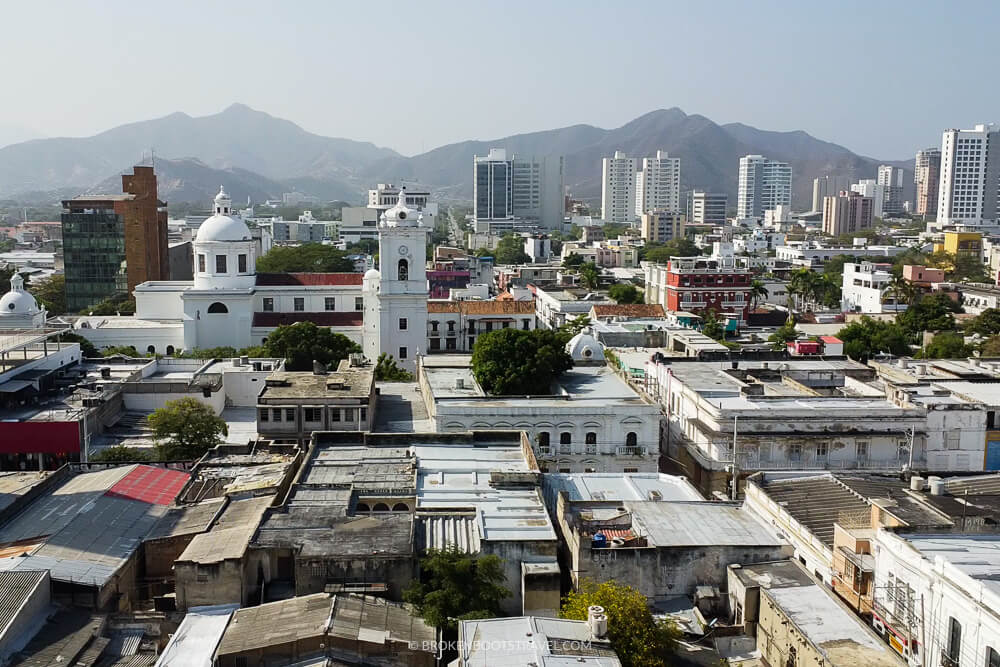
The best place to stay before the Lost City Trek is the city of Santa Marta, the largest nearby city and the capital of the Department of Magdalena.
Before the trek, we stayed at La Guaca Hostel, located just outside the historic city center. They were reasonably priced, had rooms with AC, and offered a delicious free breakfast. They also offer luggage storage if you want to leave items behind while going on your trek. Magic Tour picked us up directly from the hostel.
Other recommended places to stay in Santa Marta are Hostal Maranatha (my personal favorite!) La Brisa Loca, or Viajero Santa Marta. You can explore all accommodation options in Santa Marta on Booking.com
How to Get to Santa Marta
Depending on where you’re coming from, you can either fly or take a bus to Santa Marta. The Simón Bolivar International Airport is home to a number of domestic flights from major cities like Bogota or Medellín, or even international flights from Miami. Use the widget below to find your flight to Santa Marta.
Alternatively, you can take a bus to Santa Marta from many of Colombia’s major cities. It’s about 4-5 hours from Cartagena, 10-11 hours from Bucaramanga, 15-16 hours from Bogota, or 16-17 hours from Medellín. You can opt to take a night bus to maximize time if coming from a further destination.
Continue Your Trip
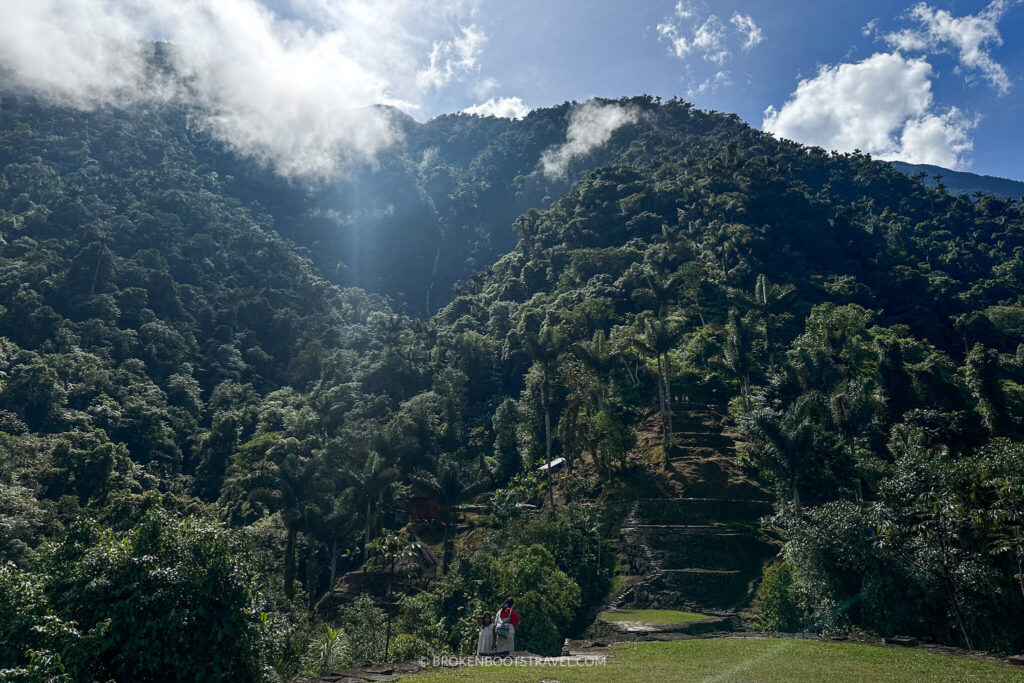
There’s plenty more to be seen along Colombia’s Caribbean coast, from the colorful colonial architecture of nearby Cartagena to the carnival celebrations in Barranquilla.
Craving more Caribbean vibes? Check out Colombia’s Caribbean island of San Andres, or the even more remote Island of Providencia for the ultimate Caribbean getaway, or make your way down the coast to the departments of Sucre or Córdoba to learn even more about costeño culture.
Mountains more your vibe? Check out my ultimate guide to Colombia’s coffee region, from the best places to sample Colombian coffee to the cutest towns to visit in the area.
Trust me, there’s no shortage of amazing things to do in Colombia, from incredible nature to explore to festivals to attend. On my mission to explore all 32 departments of the country, I’ve traveled and written extensively about the diversity of Colombia. Need help planning your own Colombia itinerary? Leave a comment below and I’d love to help!
What to Pack for Colombia
Planning a trip to Colombia? Consider adding some of these essentials to your suitcase for a truly epic trip!
💧 Filtered Water Bottle – Save on the single-use plastic and protect from parasites!
🧥 Heavy-Duty Rain Jacket – For the ever-changing Colombian weather!
🎒 Anti-theft Backpack – Perfect for exploring big cities or trekking in the jungle
🧖♀️ Microfiber Travel Towel – A go-to travel essential anywhere in the world!
🔌 Portable Charger – Keep your phone charged out on the go
🔐 Mini Padlock – Perfect for securing your backpack or locking up your items at the hotel
🔋 Universal Travel Adapter – Charge all your devices anywhere in the world!
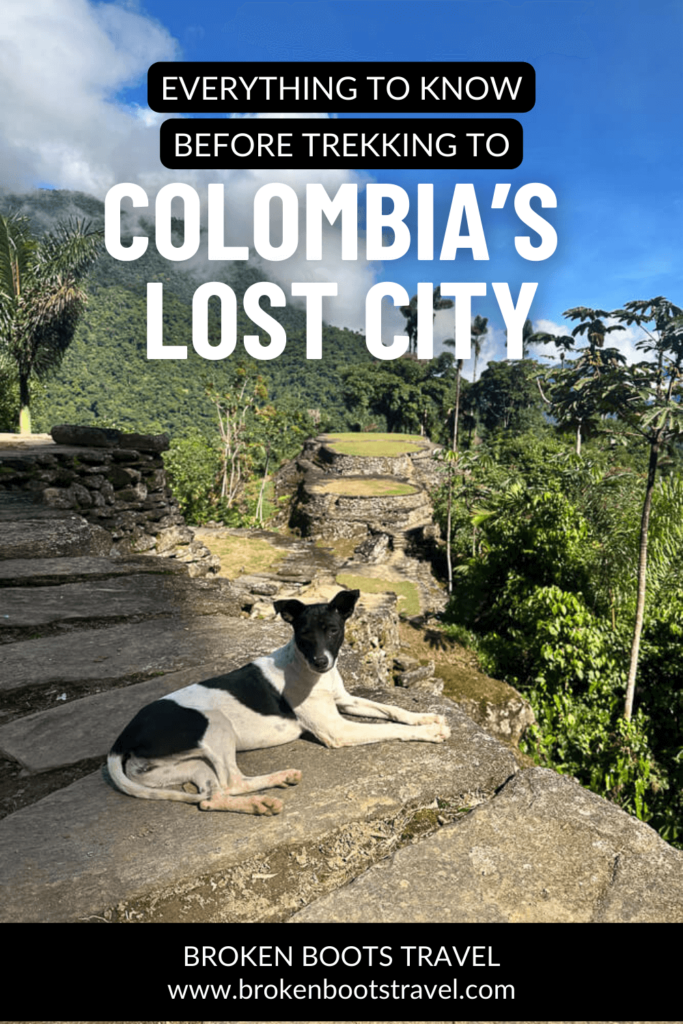
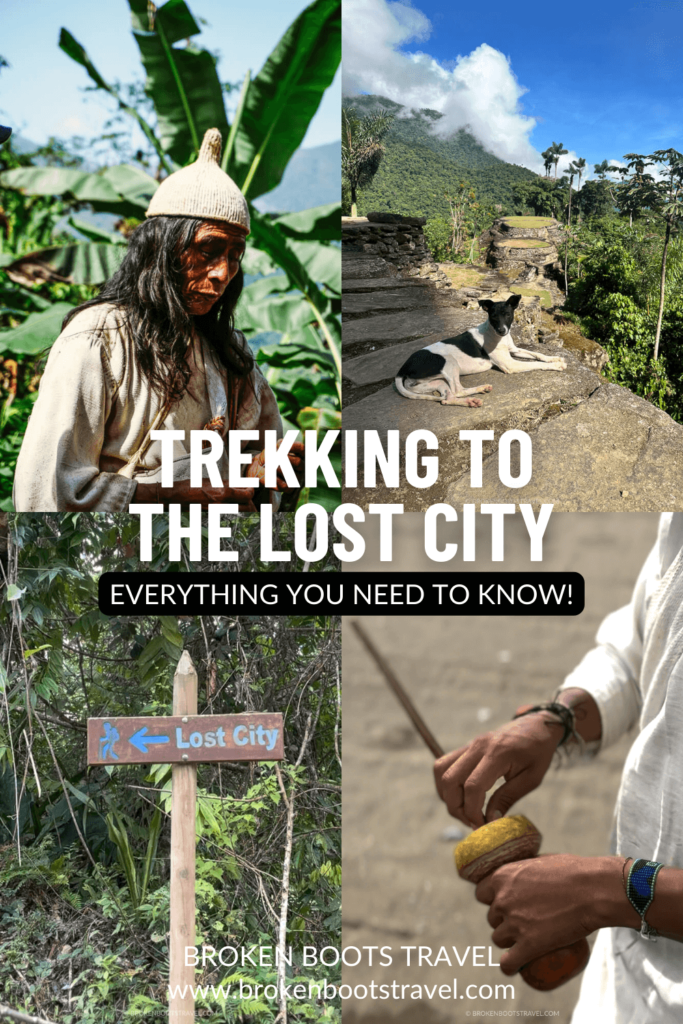
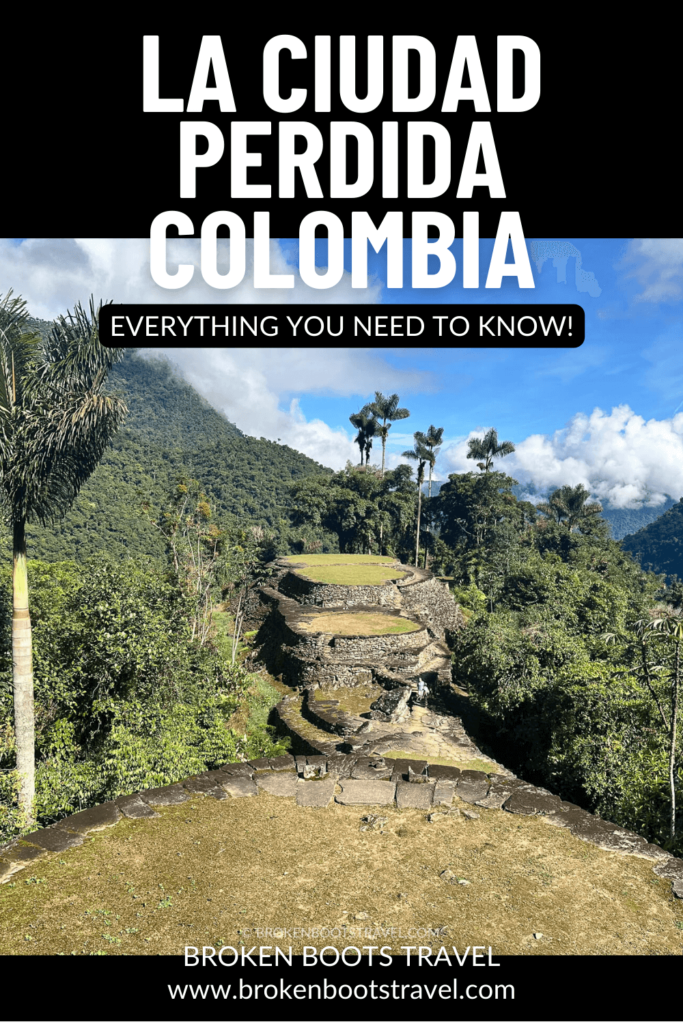
Love stories? Subscribe to my newsletter to get my latest updates delivered straight to your inbox every month. One email a month + no spam? Sign me up!
Virginia Taylor (Ginna) is a travel writer and photographer exploring the world until her boots wear through. She’s currently on a mission to explore all 32 departments of Colombia, though she formerly called the Middle East home. Want to know more? Visit the About Page.
Hi! Thank you for this wonderful blog! I am 54 and planning to do the ciudad perdida hike in 5 days. I have a super comfy pair of sturdy keen hiking shoes, but they have little peekaboo holes on the top. How important are closed to boots for this hike if I go late december? Thank you so much
Hi Bryde! That is so exciting, I know you’ll love the hike! I will say, the route can be quite muddy at times, so as long as you’re not worried about your socks/feet getting dirty Keens should be fine. That being said, I’d still recommend some good socks underneath them to prevent chafing and protect your feet a little more. I hope you have fun on your hike!
Amazing review! Thank you very much!
I read great reviews of Teyuna Tours, would you recommend them too?
Hi Frank! I don’t have personal experience with Teyuna Tours but I’ve also heard great reviews! We met a few TT groups along the way and the guides seemed knowledgeable and well equipped, plus it seems like an incredible way to get to know the local indigenous culture. I hope you enjoy your hike! 🙂
Pingback: Is The Lost City Trek Safe? My Personal Experience & Essential Safety Tips - Adventure Packages